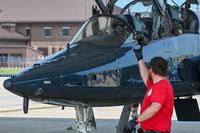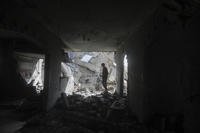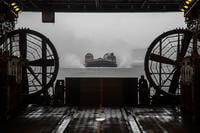 Usually, a big battle to take a city means a bunch of "friendly fire" casualities. But in November's assault on Fallujah, no U.S. troops were killed by these so-called "blue-on-blue" incidents, the Marines are saying. According to the L.A. Times, flying drones and careful planning were big reasons why.
Usually, a big battle to take a city means a bunch of "friendly fire" casualities. But in November's assault on Fallujah, no U.S. troops were killed by these so-called "blue-on-blue" incidents, the Marines are saying. According to the L.A. Times, flying drones and careful planning were big reasons why.
Col. John Coleman, chief of staff for the Camp Pendleton-based 1st Marine Expeditionary Force, said new technology, rushed to Fallouja within days of the battle, allowed air and ground units to know the precise location of U.S. forces in real time. Among the improvements was better intelligence gathering by ScanEagle, the unmanned reconnaissance aircraft that circled Fallouja and continuously beamed back information on U.S. forces and the location and movement of insurgents...
In Fallouja, the chances for friendly-fire deaths were significant, as more than 10,000 Marines and soldiers and dozens of warplanes were involved in a crowded, fast-moving battle in an area roughly the size of a Southern California suburb.
The U.S. used several unmanned aircraft during the battle. Unheard and largely unseen, they broadcast information to forces on the ground, air units and top brass at a command post.
"It's been a great tool for us," Coleman said during a wide-ranging interview about Fallouja and other aspects of the Marine mission in Iraq.
Brig. Gen. Joe Dunford, assistant commander of the 1st Marine Division, said in a separate interview that, along with technological advances, good "situational awareness" among troops on the ground thanks to advance planning helped avoid friendly-fire casualties.
"Technology is an enabler, but there's no substitute for the engagement of Marines, soldiers, sailors at all levels in good cross-talk," Dunford said.
Last year, I wrote about new-jack ID tags that could be used to prevent friendly fire. That article, for the New York Times, is here.








